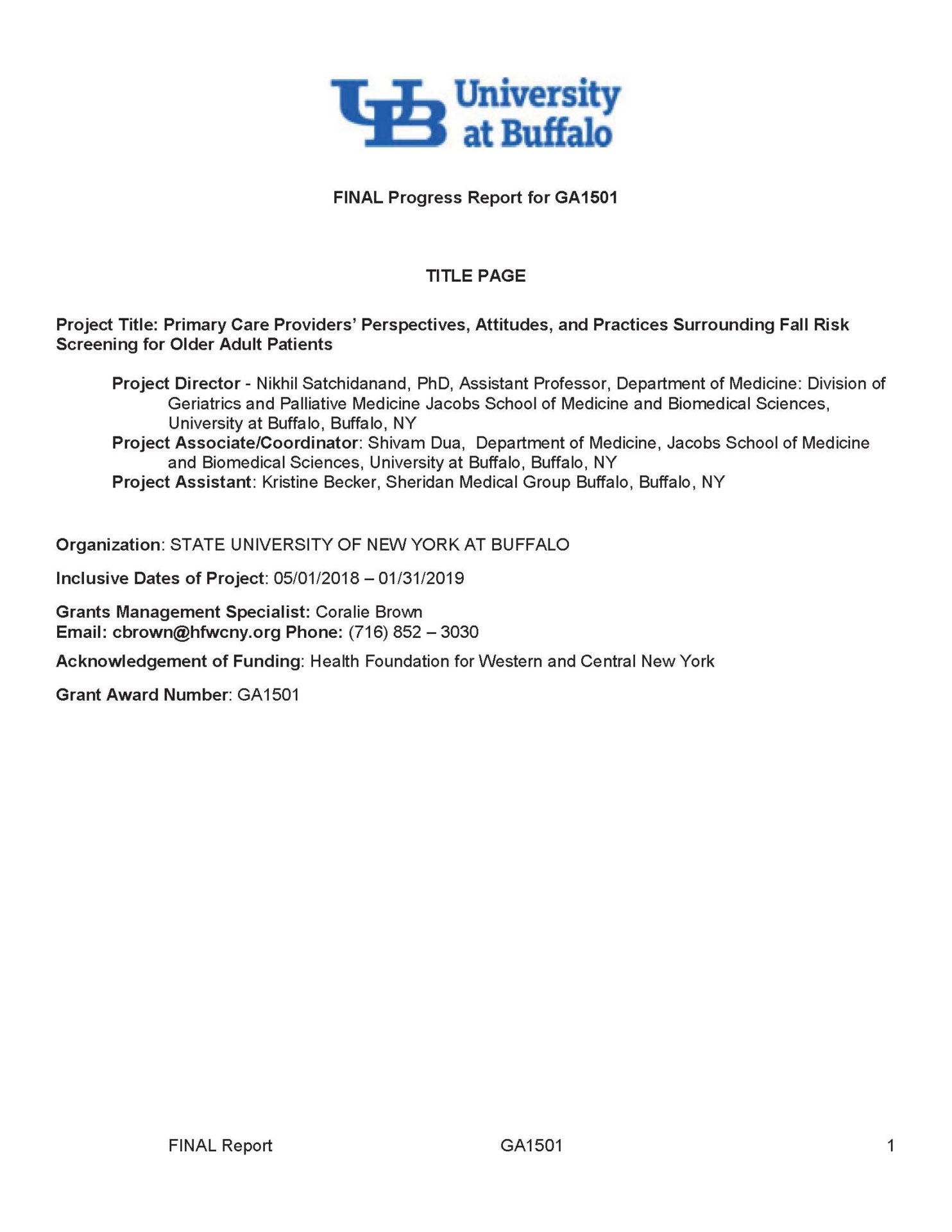According to the Centers for Disease Control and Prevention, falling is the leading cause of injury among older adults in the United States. It has been shown that 30% – 40% of older adults, aged 65 years or older, fall annually, with roughly 50% of those falls resulting in injury. In an outpatient setting, a fall is defined as “coming to rest unintentionally on the ground or lower level, not due to an acute overwhelming event (i.e. stroke, seizure, loss of consciousness) or external event to which any person would be susceptible”. In older adults falls often have far-reaching and detrimental effects on independence and quality of life. With aging, fall risk increases for a host of diverse reasons that healthcare providers must be aware of, including overall muscle weakness and frailty, impaired vision, balance problems, cognitive decline, medications, and environmental hazards.
Primary care providers are uniquely positioned to lead efforts to reduce rates of falling among their older adult patients by helping to identify patient’s needs for support and therapeutic intervention, and by facilitating referral to appropriate treatment strategies including physical and occupational therapy, pharmacy, neurology, podiatry, ophthalmology, and others. Primary care providers must also be willing to take the time to work with their older patients and their family members to explore patient perceptions regarding causes of their falls, and their interest in making changes to prevent a future fall. This collaborative process is critical to development of more comprehensive and effective fall prevention initiatives both integrated into the practice of primary care and the community at large.
In order to begin this conversation, the University at Buffalo’s Dr. Nikhil Satchidanand led a brief exploration of primary care providers’ perspectives and current practices surrounding fall prevention, as well as a qualitative investigation of patients’ experiences with falling and risk assessment, as well as their interest in participating in future falls prevention.
Focus Area: Older Adults
Category: Report
Date Published: February 1, 2019
